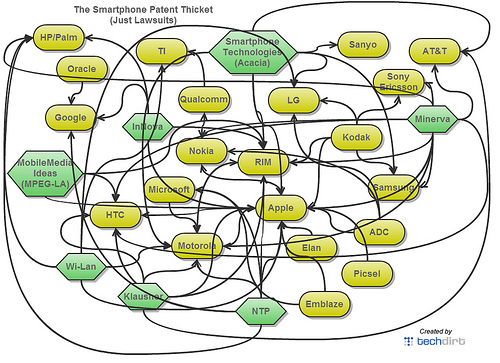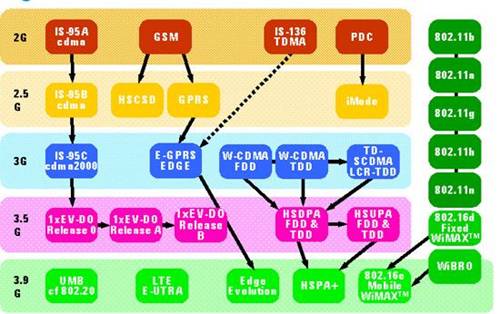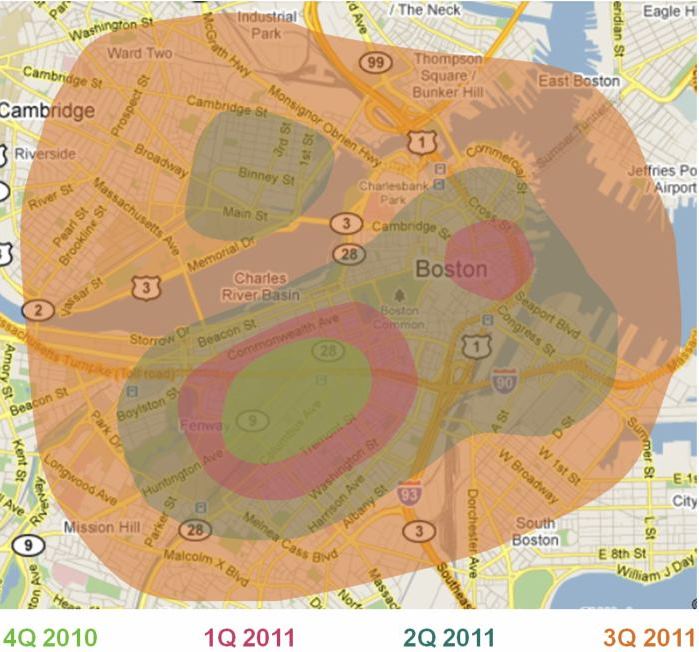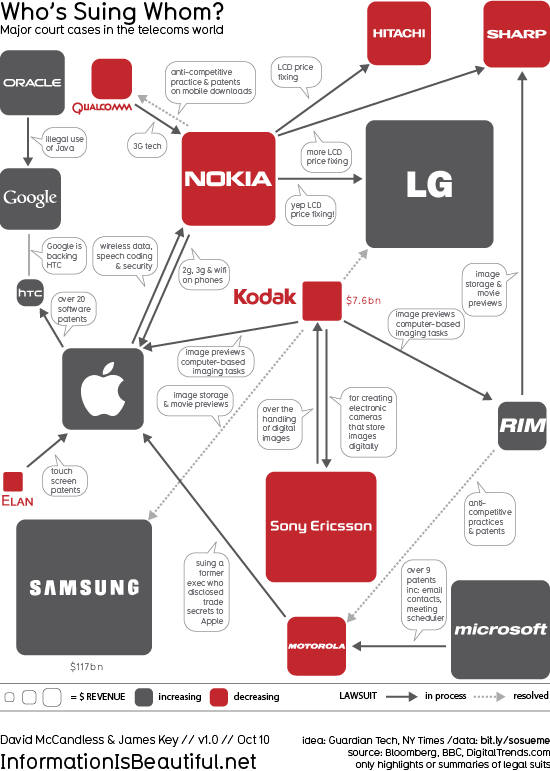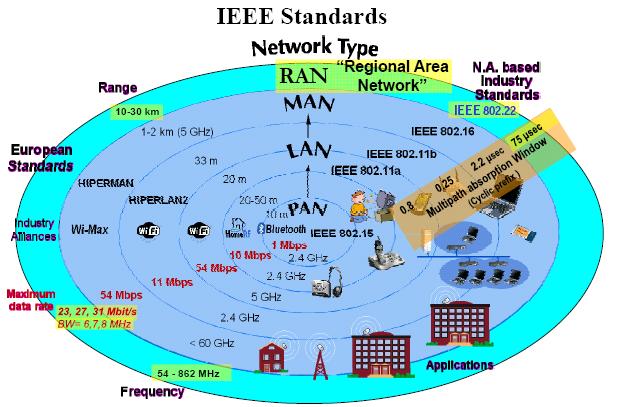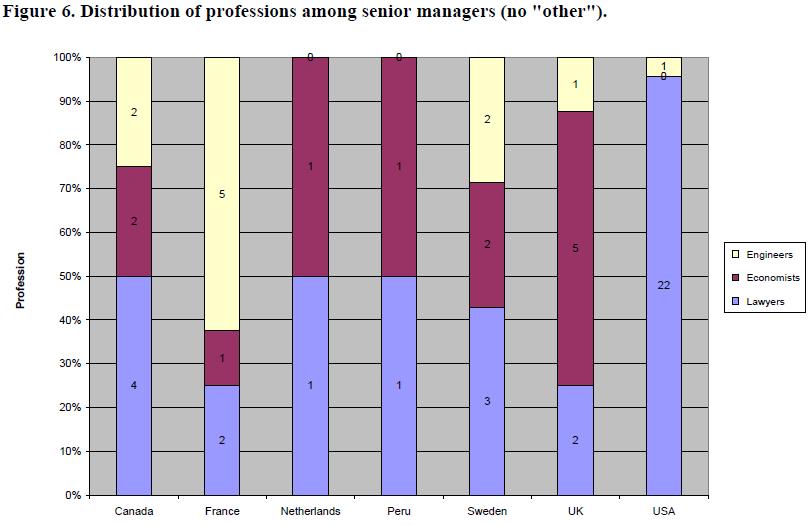The FCC’s National Broadband Plan (NBP) recommends that the Commission make available 500 MHz of new spectrum for wireless broadband, including 300 MHz for mobile use. In support of that recommendation, on October 21, the FCC released an FCC Omnibus Broadband Initiative technical paper: Mobile Broadband: The Benefits of Additional Spectrum. The paper concludes that mobile data demand is likely to exceed capacity in the near term and, in particular, that the spectrum deficit is likely to approach 300 MHz by 2014.
Recently
The FCC’s Spectrum Deficit Estimate
November 22nd, 2010Experimental Radio Applications at the FCC
November 3rd, 2010This summarizes a selection of applications for the Experimental Radio Service received by the FCC during October 2010. These are related to ultra-wideband, machine-to-machine, satellite, GSM, white space, and radar.
What do I mean by “selection?” I look at all applications for new experimental license or special temporary authority (ignoring renewals, modifications of existing licenses, and transfers of control). From those, I pick the ones I find most interesting, which is most except for the following:
- GPS repeaters, such as those put in a factory to replicate a GPS environment for testing. (Note, however, that companies regularly get tripped up by not demonstrating compliance with separate NTIA requirements.)
- Short-term authority for video program production. Someone needs a video link to cover a golf tournament or football game, perhaps by using flight-test telemetry bands (with that coordinator’s permission) for a day.
- Demonstrations for customers. Demonstrations at trade shows.
- An application very similar to one covered recently.
- Applications too vague or lacking enough detail to write much about. If applications are very lacking, FCC staff will sometimes ask for more information.
- Electromagnetic compatibility (EMC) compliance testing including RF immunity testing for compliance with European regulations.
- RF integration testing. (A radar from company A is paired with telemetry from company B and installed on a ship from company C.)
- Applications for general-purpose antenna test ranges.
- Applications for which confidentiality treatment has been sought. Companies can do this under the FCC’s rules, but I suspect it’s overdone at times. The request for confidentiality is made public, and may have some details. (A couple of times I have seen companies put what I think is the confidential information in the confidentiality request.) That, and a bit of independent research, can give me an idea what they’re up to. If I can make an educated guess, I will, saying so.
On to October’s applications:
- Zimmerman Associates filed an application (with supporting exhibits) for special temporary authority to test the capability of using a full polarimetric UWB radar system for identifying roadside bombs and improvised explosive devices (IEDs). Testing is to be on 3100-5600 MHz at Fort A.P. Hill, Virginia. The prototype equipment uses time-modulated ultra-wideband (UWB) technology developed by Time Domain Corporation. It generates a signal that is position modulated; the position of the modulated pulse varies randomly in time so as to produce a spectrum that approximates Gaussian noise.
Mobile Patent Lawsuits and Patent Pools
November 1st, 2010Techdirt prefers the following view of mobile patent lawsuits over one prepared by Information is Beautiful a few weeks earlier. Take these graphics with a grain of salt; both versions, for example, show Nokia versus Qualcomm, but those two have settled (for now). In its version, Techdirt adds entities that aren’t vendors, such as patent holding firms (in the hexagons).
Other entities get pulled in, too. Show up at an industry standards-setting meeting in which a plaintiff or defendant is participating, and you might get a subpoena, just for good measure.
Patent pools are sometimes used for efficiency, including that gained from reduced litigation. Techdirt makes an argument against them saying they restrict innovation. It prefers to let the market decide, presumably by having patent holders negotiate with each other. It has a point, but that is what wireless companies did before patent pools, and the pools’ formation were themselves a market response to that hassle. I don’t think the IEEE 802.11 patent pool has hindered the remarkable innovation still ongoing in that family of technologies. To the extent it has, I think it would be offset by patent pool efficiencies, such as moving things along more quickly. If companies don’t like a pool, they can and do choose to not join and instead negotiate separately. Qualcomm and some other companies, for example, chose to sit out the patent pool for 3G W-CDMA, even though they held essential patents.
What’s 4G? Whatever you want.
October 26th, 2010On October 21 the ITU announced it had deemed two mobile broadband technologies as IMT-Advanced. They’re LTE-Advanced and WirelessMAN-Advanced (WiMAX Release 2 based on IEEE 802.16m). At the same time the ITU called these “true 4G technologies,” leading some in the trade press to say that marketing of some existing services as 4G is misleading.
No entity is the arbiter of the designations 2G, 3G, or 4G. Even the ITU generally uses these terms parenthetically. It recognizes the lack of consensus on their meaning, and does not say others are wrong. The ITU calls the IMT-Advanced technologies “true 4G,” and they are insofar as ITU has a view of 4G and the two technologies are truly consistent with that view.
In some of these articles, Sprint and Clearwire, to name two examples, catch flack for calling their current WiMAX offering 4G. I’d call it 3.5G, but I can’t say they’re wrong. An ABI Research analyst agrees with Sprint and Clearwire; his view is that everything TDMA is 2G, everything CDMA is 3G, and everything OFDMA is 4G, regardless of data rate. It’s a reasonable argument based on backward compatibility, but I’m not ready to agree. If that or something else ends up being the industry consensus, I won’t object.
Below is a comparison found on the ITU website. It’s generally consistent with my view.
Don’t like these classifications? Make your own. Within reason.
________
UPDATED 11/04/2010
ABI analyst link updated with more current post.
The Spectrum Famine
October 25th, 2010Mitchell Lazarus writes in the October 2010 issue of IEEE Spectrum on The Great Radio Spectrum Famine — the challenges of getting more spectrum for mobile broadband. He notes the importance of incentives that can lead users to optimize or reduce spectrum usage on their own. There is some great historical information as well. It is another informative and thought-provoking article from Mr. Lazarus, who can also be found from time to time on the CommLawBlog.
A comment of mine was posted along with the article today. I copy my comment below:
Thank you Mitchell for sharing your insights and providing an important historical perspective. I had almost forgotten about the assignment by industry in two-way. Another scary tale if I run out of ghost stories this Halloween.
I, too, have followed the decline in terrestrial TV viewing for years. Today, though, I see more people “cutting the cord” and dropping cable or satellite. They use a combination of internet and over-the-air viewing. I wonder if this downward trend is ending.
In the Capitol Hill neighborhood in Washington, the local wireless internet service provider is now offering a service called “free TV.” You pay them $300 to put an antenna on your house and hook it up to your TV. Twenty channels with no monthly fee. They market this as an innovation, and it sells.
We see these large projections for future mobile broadband demand; a lot of that is video. Mobile operators have been working about 10 years to engineer and make a business case for broadcasting. Technically, they can make it work but it’s not a business yet, anywhere in the world, in part because of the system capacity tied up in providing the service.
In the hierarchy of mobile needs, I’d say voice is most basic closely followed by text. Video is nice, but less essential to my life. I’ll use it on my unlimited data plan. If a per-byte tiered-pricing plan is put in place, I may pass. I’ll download it at home and move it to my phone. Or wait until I’m near a Wi-Fi hotspot.
I do believe in the next few years we’ll see some significant technologies that allow for more efficient spectrum use. Source coding technology will be one of those areas. There will also be better networking protocols for heterogeneous radio networks what will allow for more seamless handover among 3G, 4G, Wi-Fi, and even Ethernet; this will make it easier for operators to move off crowded mobile broadband spectrum whenever possible. Applications can be more tightly coded.
None of the above is meant to deter the search for more spectrum for mobile broadband. I like the FCC’s plan for the voluntary transfer, using financial incentives, of TV allocations to mobile broadband. As you suggest, incentives help. I like the suggestion involving a non-profit group. In addition, I wonder if spectrum can be made more like property; when people own something, then tend to take care of it and maximize its value.
One comment here suggests femtocells as part of the solution. Femtocells are a good fix to fill in coverage holes. From what I have seen so far, however, they won’t be much help with the spectrum crunch. Interference issues preclude ubiquitous placement.
netBlazr: Unlicensed Wireless versus Business Broadband Incumbents
October 17th, 2010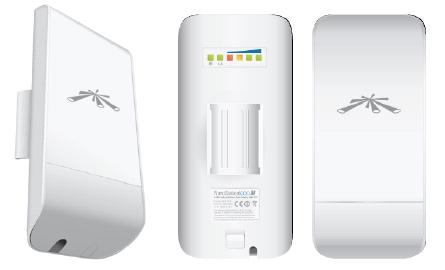 Unlicensed wireless may disrupt the broadband service market in Boston. Communications engineer Brough Turner and his partners have founded netBlazr, a new business broadband service that takes advantage of cheap metropolitan fiber and uses unlicensed wireless technology from Ubiquiti Networks that can operate with various Wi-Fi protocols, and a proprietary one, in a mesh configuration. In the netBlazr network the devices operate at an aggregate data rate of 100 Mbps with 50-500 meters per hop. Throughput per user is 10 Mbps.
Unlicensed wireless may disrupt the broadband service market in Boston. Communications engineer Brough Turner and his partners have founded netBlazr, a new business broadband service that takes advantage of cheap metropolitan fiber and uses unlicensed wireless technology from Ubiquiti Networks that can operate with various Wi-Fi protocols, and a proprietary one, in a mesh configuration. In the netBlazr network the devices operate at an aggregate data rate of 100 Mbps with 50-500 meters per hop. Throughput per user is 10 Mbps.
In Boston, Verizon charges about $2,200 per month for symmetrical 10 Mbps business service via fiber; netBlazr charges $189 per month for equivalent service using its hybrid fiber/wireless system. Less-expensive shared plans, including one that’s free, are available for businesses with lower-priority traffic.
In the Transition to 4G, Voice will Stay on 3G
October 15th, 2010Most cellular operators are beginning the transition from 3G technologies to 4G LTE. That will mainly be for high-speed data and not voice, support for which will come years later. Communications engineer Jim Murphy describes some of the networking issues that make voice impractical on LTE on day one. To his comments I’d add that the preferred LTE voice solution is VoIP on the IP Multimedia System (IMS) framework, which has had slow adoption in the mobile community.
Jim’s example is from the 3GPP family of technologies, of which LTE is part. Most 3GPP2 operators, such as Verizon Wireless, are also planning a migration to LTE. They migrate from a different family of technologies, those specified in 3GPP2 and which include cdma2000 developed largely by Qualcomm. In Verizon’s transition, high-speed data on cdma2000 networks, now provided by EV-DO, will migrate to LTE. Voice will stay on cdma2000 1x for several years. That’s not a problem, because that technology keeps improving. The latest version, called cdma2000 1x Advanced, has achieved a 50x increase in voice capacity over the predecessor IS-95 system launched in 1993.
Both 3GPP and 3GPP2 3G voice feature a soft-handover (make-before-break) scheme that allows for, essentially, a circuit-switched connection. Yes, you’ll be able to run Skype and other VoIP services on 4G LTE data networks, if you want. In terms of the total user experience, however, most will prefer the seamlessness of standards-based integrated voice capability.
VoIP is the future. For 4G voice, though, it’s just great in theory at this time.
Who’s Suing Whom?
October 7th, 2010Progress & Freedom Foundation Closes Doors After 17 Years
September 30th, 2010One of the original digital-economy think tanks, the Progress & Freedom Foundation announced it is shutting down after 17 years of operation. Broadcasting & Cable points to lack of funds for the closing.
FCC Finalizes White-Space Rules
September 23rd, 2010The FCC finalized its white-space rules today, acting on petitions for reconsideration of its earlier decisions. It issued an 88-page Second Memorandum Opinion and Order that explains its decisions and includes the final white-space rules. A much-shorter press release was also issued.
At least one FCC observer has noted an uncharacteristic level of hype in today’s announcements. The FCC calls it “super Wi-Fi,” and adds the “potential uses of this spectrum are limited only by the imagination.”
Over two years ago, Google called it “Wi-Fi on Steroids.” It was later picked up by the popular press. Not all agree; it’s “Wi-Fi on Crutches” according to one who dares to consider the realities of physics and economics.
I’ll call it “Wi-Fi on Caffeine,” at least with respect to better range and coverage — if not data rates — compared with current Wi-Fi equipment. This is partly due to operation in the UHF-TV band instead of the 2.4 GHz band. In major markets and their suburbs, there will be few or no channels available for white space use. In rural areas and other less dense areas, the technology will be a good fit with Wireless Internet Service Providers (WISPs) and other longer-distance applications.
Cellular operators would like some of the white space on a licensed basis for backhaul in rural areas. They didn’t get it today, but the FCC is actively considering it and we may hear more on that by the end of the year. No way are all these vacant channels going to be occupied by internet services in the most rural areas, so the proposal of the operators makes sense.
In IEEE 802, Working Groups 802.22 and 802.11 are working on standards that can be used by equipment in these applications; 802.22 may be the one with longer range. Working Group 802.19 is trying to facilitate coexistence between the two. Now, there are asymetric interference effects, which is causing friction between the two groups beyond the normal competition. (802.22 takes the harder interference hit.)
There will be other standards and equipment as well. The white space concept is international, but unique to each area of the world.
Equipment is not easy; it’s challenging to develop sufficiently-broadband power amplifiers and antennas, and to meet the emission mask in a cost-effective manner.
Another challenge is developing a business plan when 120 MHz of TV spectrum could be taken away under the National Broadband Plan.
Staff at the FCC: How Many Lawyers, Economists, and Engineers?
September 19th, 2010The FCC’s professional staff is dominated by lawyers, and the agency wants to increase its numbers of economists and engineers. How does the FCC’s staffing compare to telecommunications regulatory agencies of other countries?
Economist and former FCC Senior Adviser J. Scott Marcus makes this comparison in a new paper. He cautions that his results are indicative, rather than conclusive. It’s hard to compare some agencies because, depending on the country, the same agency that regulates telecommunications may also regulate, say, trains and the postal service.
Figure 5 from the report, below, shows the distribution of professions among professional staff, and shows the predominance of lawyers at the FCC.
Figure 6 is a similar comparison among senior managers; in that role, at the FCC, engineers and economists are basically non-existent.
Marcus observes that the percentage of lawyers in these agencies generally tracks that of the countries as a whole. US society is litigious, so it may be rational for the FCC to have many lawyers.
This report is also noteworthy for it being the first opportunity for some of these agencies to compile these figures.
Mixed Messages on IPv6
September 15th, 2010The Institute of Electrical and Electronics Engineers (IEEE) is an international engineering organization. It has a unit, IEEE-USA, which was formed in 1973 to support the public policy interests of IEEE members in the US. It is respected on Capitol Hill, which sometimes turns to IEEE-USA for input on technology policy matters. That’s fine, if the input is sound.
One problem is that participation in IEEE-USA tends to be dominated by those not in industry, such as government employees, consultants, and academics. This can sometimes result in unbalanced policy positions that are unfavorable to industry.
Take the transition to IPv6. Most of the networking industry agrees that IPv6 is the future. We’re running out of IPv4 addresses. There is no panic, but organizations should be planning for the transition. These notions are generally supported by Google, Cisco, Scott Bradner, and many others.
In its August 2009 White Paper on IPv4 address exhaustion, however, IEEE-USA says that it “discusses IPv6 only as an example replacement. This paper is not intended to exclusively endorse IPv6 as the sole replacement structure and strategy for IPv4. Indeed, the lack of adoption for IPv6, which is an aging alternative, may indicate that preventing premature IPv4 exhaustion is another viable strategy.”
It’s a significant backpedaling from the industry position, plus a dig at IPv6 for having been around a while. This is supported by the dues of industry’s IEEE US members. Industry can lobby government on IPv6, but when a staffer looks up the IEEE-USA view, some of that effort is wasted.
IEEE-USA positions are largely driven by volunteer input. If industry volunteers don’t participate, industry’s view will be inadequately reflected. If a few networking companies could participate more actively in IEEE-USA, it would help tighten up these positions and help the group be a better force all of IEEE’s US members.
